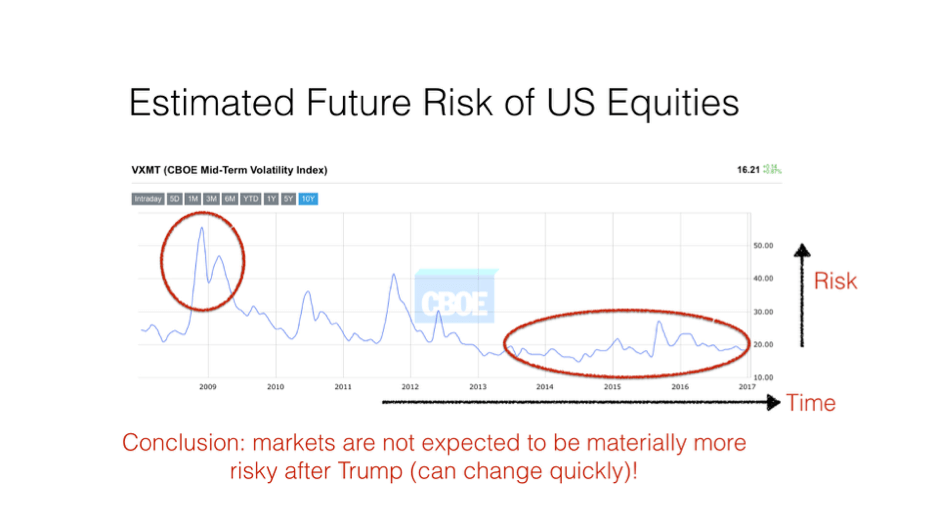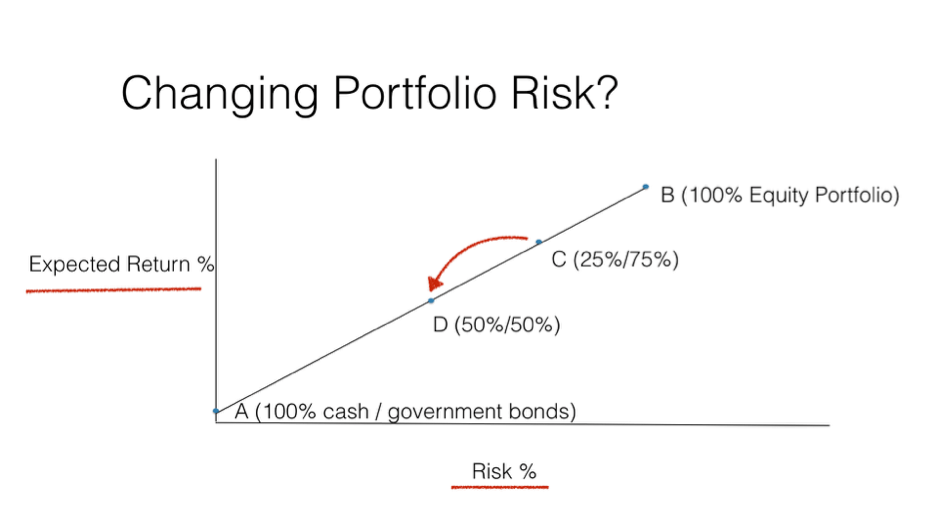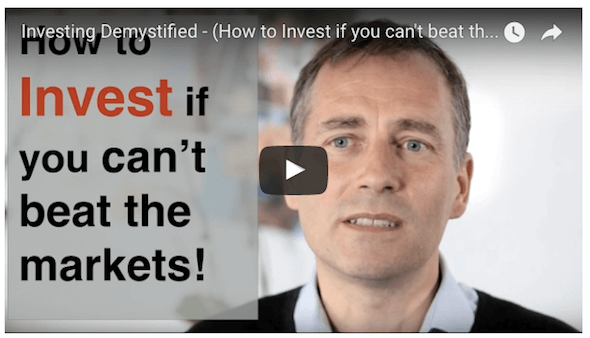The following is a guest post by Lars Kroijer, who used to run a hedge fund in London and wrote the book, “Investing Demystified: How to Invest Without Speculation and Sleepless Nights“. If you’d like to guest post on Money Q&A, check out the site’s guest posting guidelines.
With President Donald Trump making headlines on an hourly basis and our social media accounts going crazy with comments on his presidency, we are left asking ourselves: Should we perhaps change our investment strategy as a result?
In short, the answer is yes but perhaps not how you think.
In earlier blogs, I have outlined how I consider it highly unlikely for the vast majority of investors that they can beat the markets themselves through active stock selection, market timing, or via picking the one out of ten actively investment funds that may do so over a ten-year period.
And, for your equity exposure, you should pick as broad and cheap an index tracking exposure as you can get your hands on, namely a world equity index tracker. Just because Donald Trump is now President of the United States, that is no less true. You most likely couldn’t beat the markets before November and still can’t.
Editor’s Note – You may also like to see five things you can learn about personal finance from President Trump!
What you perhaps can expect is to make 4-5% above inflation. This is based on over 200 years of history of equity returns in many states of the world. And, you can expect that return to range from lottery type winnings to desperate failures – can also reasonably expect to be compensated in higher risk periods with commensurate higher expected returns, but there are no guarantees obviously.
Editor’s Note – I think you can squeeze out a 10% return on your investments. Be sure to check out how.
So, even in a President Trump world, we haven’t found a crystal ball. So, what can we do?
In my view, there are two main things we main things we should focus on.
- Evaluate if the risk of the markets has changed enough that we should re-evaluate the risk levels of our portfolio.
- We should consider if the sudden change in the political landscape has changed our overall economic life enough that our risk profile should change as a result.
Market Risk
Below is a graph of the expected future risk of the US stock market. Without being too technical, it measures the expected standard deviation six months into the future. Since the index value is based on the implied volatility of equity options, it is a market price.
If you think you know the future volatility of the market better than this chart, you can get rich trading it (many try!). There are many issues with this kind of chart, including that the value itself is very volatile. So, the risk changes a lot.
The volatility doesn’t capture “fat tails”, the fact that unlikely events happen far more than predicted by the normal distribution assumption of the standard deviation. And, that it is only six months into the future. That all said, the chart gives a good idea of future expected risk. You can also find it on cboe.com.
But, what we see from the chart is that as momentous as the election of President Donald Trump undoubtedly was political. In terms of market risk, it hardly made a dent. See the very volatile 2008/09 period circled in red in the chart compared to the more recent period.
Because the election of President Trump was a genuine surprise (the Betfair probability of Donald Trump getting elected was about 15% the day of the election), we can get a good sense of how much things shifted as a direct result of President Trump’s election. If President Trump had been expected to win, the impact of his presidency would already have been built into the market price. But, the answer is the equity market risk hardly moved.
Confused? Don’t be. But, know that the expected risk of the stock market in the future did not change as a result of the election of President Trump. And, that alone therefore should probably not cause you to change the risk profile of your investment portfolio.
Your Risk
So, while the market risk has not changed, your personal risk may well have.
Although the overall market did not move hugely after President Trump’s election, there are clearly some sectors and geographies that will be hugely impacted by his election. If you work at a Mexican company that exports most its products to the US, then a Hilary Clinton victory would clearly have been better news.
Similarly, imagine the scenario where you work in mid-level management at a BMW factory in the US. Confident in the company, you have invested most your savings in BMW stock. Your pension is guaranteed by BMW, and most people in the town you live in are also employed by BMW.
To say that you are overexposed to BMW would be a massive understatement. Your job, pension, savings, and house all massively correlate to the BMW corporation. You were clearly guilty of putting all your eggs in the BMW basket and could eventually paying for it should the political favor of primarily foreign owned companies turn sour. Even less extreme versions of this example are well worth avoiding.
So, how do you know if sectors you are exposed to might be helped or hurt by a Donald Trump presidency, Brexit, or a host of other geopolitical risk events? Again, because President Trump’s victory was a surprise, we can see the market impact right after the election.
It was not a surprise to see the Mexican Peso decline after President Trump’s surprise victory. So, what’s my advice? You should sniff around. Understand your economic exposures and see how those sectors fared after the election.
If your investment portfolio consisted of a world equity tracker combined with super low risk government bonds, then you would broadly have diversified away a lot of the sector/company specific geopolitical risk.
But, your individual non-portfolio exposures may still lead you to change the risk you feel you can afford in your investment portfolio after the election. As an example illustrated below, you may previously have had the fairly bullish 75%/25% equity/bond split. But, after assessing your new geopolitically adjusted risk, you feel like a 50%/50% risk may be more appropriate.
The change is not because the markets have gone down in value or up in risk. But, it is rather because the sectors or geographies you are otherwise exposed to changed your overall risk profile.
Deciding how a Donald Trump presidency might impact your overall economic life is far from a science. We don’t really know and can’t expect to be precise about it. But, you shouldn’t ignore the issue.
If you are uncertain, perhaps you should consider seeking the help of a financial advisor to help you think through your risks and help determine your risk appetite. They can help you understand your overall economic life, how your risk profile may have changed, or even how you can protect yourself from being overly investing in your employer.
For a recap of the things discussed in this blog I’ve put a video on my YouTube channel which you can watch here – https://www.youtube.com/watch?v=w6wqnC-SqA8
Check outLars Kroijer’s investing video series on www.kroijer.com and YouTube. Also, check out his book, “Investing Demystified: How to Invest Without Speculation and Sleepless Nights“.
What do you think? Has geopolitical risk changed the way that you invest? What changes have you made to your investment portfolio?



